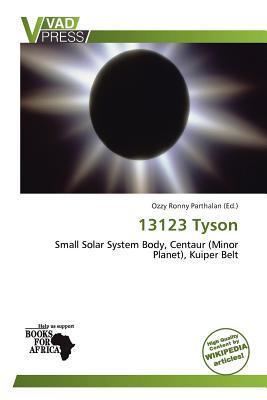Discovery date 16 May 1994 Alternative names 1994 KA · 1995 YO2 Observation arc 63.48 yr (23,186 days) Aphelion 3 m | MPC designation 13123 Tyson Discovered 16 May 1994 Orbits Sun | |
 | ||
Discovered by C. ShoemakerD. H. Levy Discoverers David H. Levy, Carolyn S. Shoemaker Similar Solar System, Asteroid belt, Sun, Comet Shoemaker–Levy 9, 5261 Eureka | ||
13123 Tyson, provisional designation 1994 KA, is a stony Phocaea asteroid and a possible binary system from the inner regions of the asteroid belt, approximately 10 kilometers in diameter. It was discovered by American astronomer Carolyn Shoemaker and Canadian astronomer David H. Levy at the U.S. Palomar Observatory, California, on 16 May 1994.
The stony S-type asteroid is a member of the Phocaea family, a rather small group of asteroids with similar orbital characteristics, named after its largest member, 25 Phocaea. It orbits orbits the Sun at a distance of 1.7–3.0 AU once every 3 years and 8 months (1,324 days). Its orbit has an eccentricity of 0.27 and an inclination of 23° with respect to the ecliptic. The first precovery was taken at Palomar's Digitized Sky Survey (DSS) in 1953, extending the asteroid's observation arc by 41 years prior to its discovery.
In February 2015, a rotational light-curve was obtained by astronomer Petr Pravec at the Astronomical Institute, Czech Republic. It showed a well-defined rotation period of 7000333030000000000♠3.3303±0.0002 hours with a brightness amplitude of 0.20 in magnitude (U=3). A previous photometric observation in August 2009, at the Oakley Southern Sky Observatory, Australia, gave a light-curve with a similar period of 7000332900000000000♠3.329±0.001 and a brightness variation of 0.35 in magnitude (U=3-).
According to the survey carried out by NASA's space-based Wide-field Infrared Survey Explorer with its subsequent NEOWISE mission, the asteroid measures 10.9 kilometers in diameter and its surface has an albedo of 0.197, while the Collaborative Asteroid Lightcurve Link assumes an albedo of 0.23 and calculates a smaller diameter of 8.2 kilometers, based on an absolute magnitude of 12.64.
The minor planet was named in honor of American astrophysicist and popular science communicator, Neil deGrasse Tyson (b. 1958). In 1996, he became director of New York's Hayden Planetarium and oversaw its complete renovation. Tyson was also a research affiliate at Princeton University. Naming citation was published on 11 November 2000 (M.P.C. 41572).
